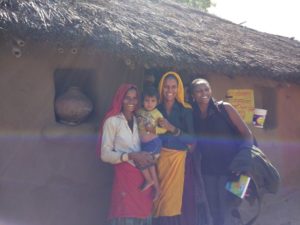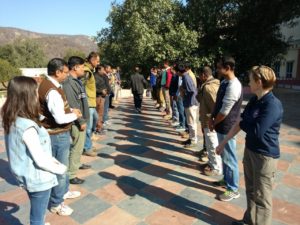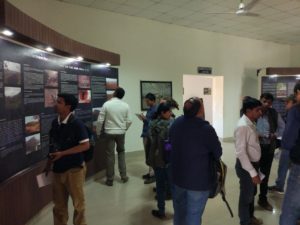
11th February
by Shailesh Pethe & Amit Dyani
This was one more day in the ongoing process of Wildlife conservation in India. The occasion was 21-days of course work in Interventions in Wild Animal health management. Today was the day when we learnt about the most important non-technical aspect of Tiger Conservation. The topic of the day was ‘Introduction to People Park Interface’ the session was delivered by Dr BK Mishra, Former Prof, Wildlife Institute of India. Dr Mishra gave a detailed presentation on the importance of conservation being integrated with the economic development of local communities. An interesting fact was learnt that India occupies just 2.5 % of world land mass, yet it accommodates 16% human population and 18% of cattle population. An emphasis of more organised, focused micro planning eco-development experience was laid. The strongest messages that need to be taken are
- Lack of awareness that our present actions will jeopardise the life of our children
- Overlooking the fact that Earth is the only planet where life can exist.
- Economic agenda is not supreme
The point of not realising the subtle changes happening in nature and human-animal-human inter-relationships was best demonstrated by a novel way. Dr Mishra made all the participants play a novel game to realise the changes around us.
To collect first-hand information on People Park Interface, the participants visited the village Hari pura located within the Sariska National Park. This village had failed to relocate itself outside the park area when the authorities decide to relocate all villages falling within the Park boundaries. The participants were divided into four groups. Each group was assigned a task to gather information on
- Socio-economic considerations
- Livelihood and occupational types
- Resource dependency
- Resettlement issues
The group reassembled in the classroom to present their findings and conclusions in details.
The post lunch session was predominated by a visit to the nature interpretation centre (NIC). The participants divided into different groups, studied various aspects of the NIC and general management of the Sariska National Park. In general, the participants were majorly critical of the activities conducted by the authorities. The session was finally concluded by Dr Mishra.
The day was certainly path laying exercise on the effective management of the issues relating to wildlife conservation and the role of local villagers in the gamut of things. At no point, the role, participation and well-being of villagers can be ignored if a sustainable wildlife conservation has to be achieved.




